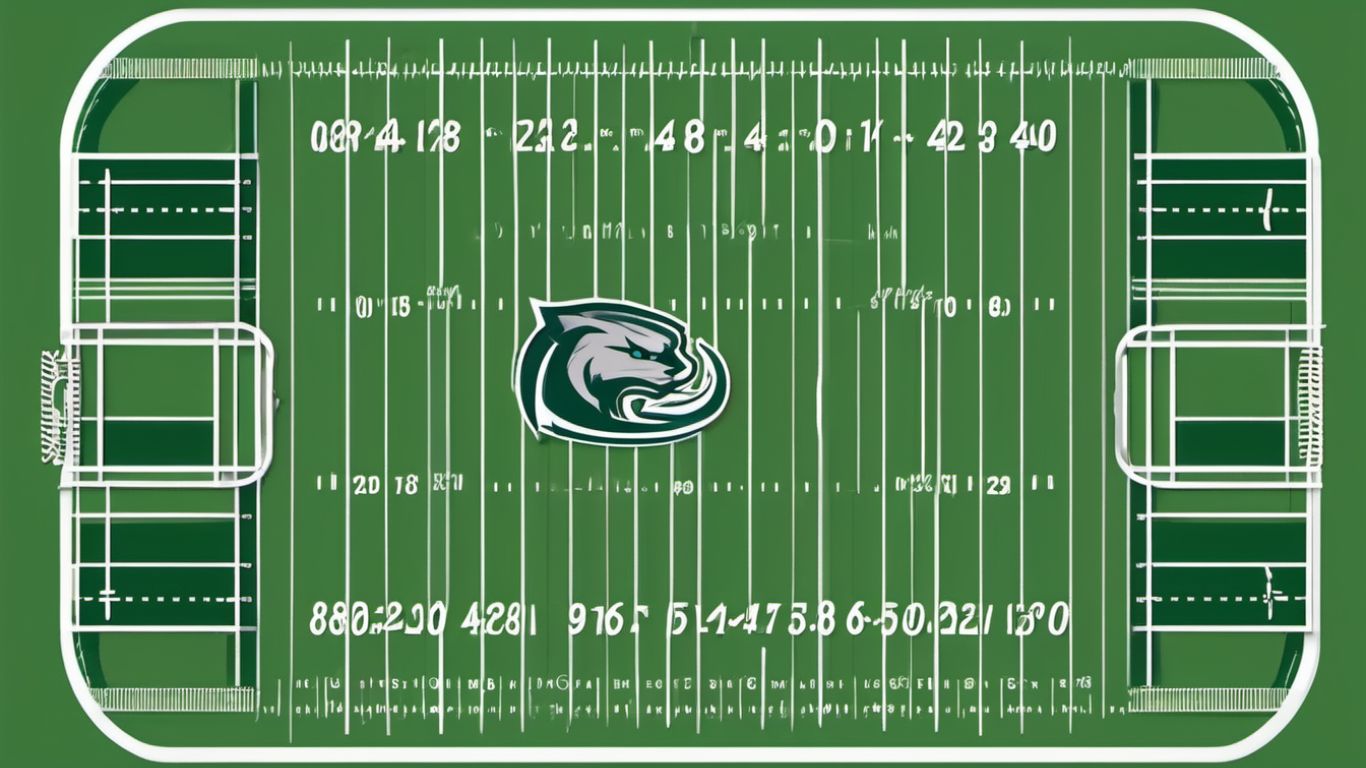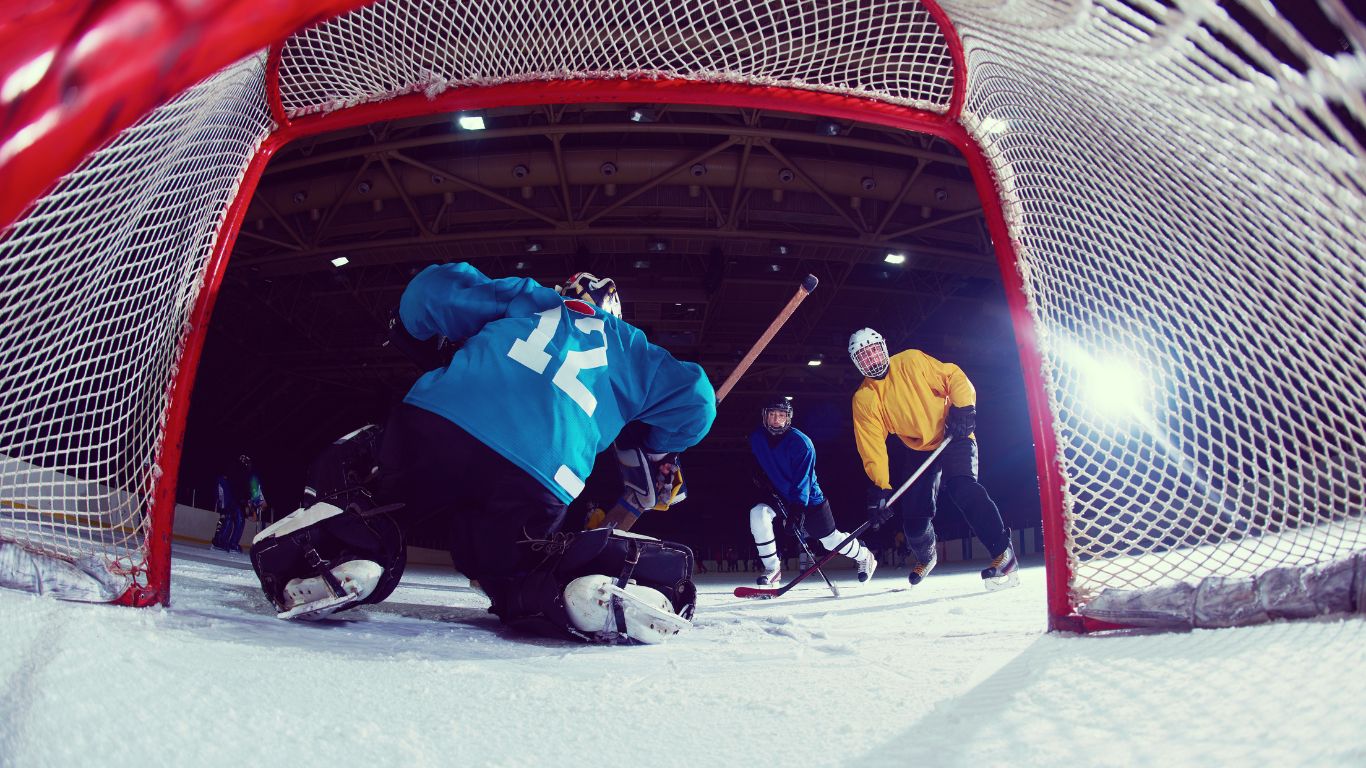When searching for the best hockey stick, consider factors like material, weight, and flexibility. A top-performing hockey stick designed for your playing style can significantly impact your game.
Are you looking for a hockey stick that will take your game to the next level? Whether you are a professional player or enjoy a casual game, finding the best hockey stick to enhance your skills is essential. With various options available in the market, it can be overwhelming to choose the right one.
In this guide, we will explore the key features to look for, the benefits of different materials, and some top recommendations to help you make an informed decision. By the end, you will have the knowledge to select the perfect hockey stick that perfectly complements your playing style and skills.
Choosing The Right Hockey Stick
When it comes to excelling in the game of hockey, one of the most critical decisions a player must make is choosing the right hockey stick. With an array of options available, finding the best hockey stick can be overwhelming. To help you make the right choice, consider the following factors:
Consider Your Playing Style
Selecting the best hockey stick starts with assessing your playing style. Forwards may benefit from a stick with a lower flex for quick shots, whereas defensemen may prefer a stick with a stiffer flex for powerful slap shots and poke checks.
Determine Your Desired Flex
When it comes to flex, it’s essential to choose a stick that aligns with your playing style. For players seeking more power, a stick with a higher flex may be the best choice. Alternatively, players looking for quick releases and enhanced puck feel may opt for a stick with a lower flex.
Select The Correct Stick Length
Opting for the right stick length is crucial for maximizing performance. A general rule of thumb is to stand in your skates and hold the stick upright. The top of the stick should reach your chin, ensuring optimal control and maneuverability on the ice.
Understanding Hockey Stick Flex
Understanding hockey stick flex is crucial when looking for the best hockey stick. This important factor affects shooting power and accuracy, making it essential to choose the right flex for optimal performance on the ice.
Understanding Hockey Stick Flex Hockey stick flex is a crucial aspect to consider when choosing the best hockey stick for your game. Understanding stick flex will not only improve your performance but also prevent potential injuries. Let’s delve into this essential component of a hockey stick.
What Is Stick Flex?
Stick flex refers to the level of stiffness or flexibility of a hockey stick, primarily determined by the amount of force required to bend the stick. It is denoted by a number, usually ranging from 40 to 110, indicating the pounds of force required to flex the stick one inch.
Effects Of Stick Flex On Performance
The stick flex greatly impacts a player’s performance on the ice. A higher flex number results in a stiffer stick, making it ideal for players with taller stature and stronger muscle strength. Conversely, a lower flex number provides more flex, benefiting players who rely on wrist shots, quick releases, and stickhandling.
Finding The Ideal Flex For You
The ideal stick flex is determined by considering your body weight, playing style, and position. As a general rule, the flex rating should be approximately half of your body weight. For instance, a player weighing 160 pounds should opt for a stick with around 80 flex. Experimenting with different flexes and seeking advice from experienced players can help in finding the perfect fit for your game. In conclusion, understanding hockey stick flex is vital for optimizing your performance on the ice. By considering the effects of stick flex on performance and finding the ideal flex for your playing style, you can elevate your game and make the most out of your hockey stick.
Different Types Of Hockey Stick Construction
When it comes to hockey, having the right equipment can make all the difference in your performance on the ice. One of the most important pieces of gear for any hockey player is the hockey stick. Hockey sticks come in different types of constructions, each with its own benefits and drawbacks. In this article, we will explore three main types of hockey stick construction: traditional wooden sticks, composite sticks, and hybrid sticks.
Traditional Wooden Sticks
Traditional wooden sticks have been a staple in the hockey world for years. These sticks are commonly made from birch, ash, or other types of wood. While wooden sticks may not offer the same technological advancements as composite sticks, they still have their advantages. One of the main benefits of wooden sticks is their durability. They can withstand the wear and tear of the game and have a longer lifespan compared to other types of sticks. Additionally, wooden sticks offer a traditional feel and can be a popular choice among players who prefer a more traditional style of play.
Composite Sticks
Composite sticks have gained popularity in recent years due to their advanced construction. These sticks are made from a combination of carbon fiber and other materials. The use of carbon fiber makes these sticks lightweight, allowing players to have better control and maneuverability on the ice. Composite sticks also offer a higher level of responsiveness and power transfer, which can result in more accurate shots and passes. Moreover, composite sticks can provide a more consistent performance regardless of temperature and humidity conditions. However, they may be more prone to breakage, especially when subjected to hard impacts.
Hybrid Sticks
A relatively newer addition to the hockey stick market is the hybrid stick. Hybrid sticks combine elements of both wooden and composite sticks to offer the best of both worlds. These sticks typically have a wooden blade attached to a composite shaft. The wooden blade provides the traditional feel and durability, while the composite shaft offers the benefits of lightweight and increased performance. Hybrid sticks can be a great choice for players who want the enhanced control and power of a composite stick along with the feel of a traditional wooden stick.
Choosing the right type of hockey stick construction ultimately depends on your personal preferences and playing style. Traditional wooden sticks offer durability and a classic feel, while composite sticks provide lightweight performance and enhanced power transfer. Hybrid sticks combine the advantages of both wooden and composite sticks. Consider your playing style, level of play, and budget when making your selection. Regardless of which type of stick you choose, the most important thing is to find one that feels comfortable and aids in your overall performance on the ice.

Credit: www.amazon.com
Blade Patterns And Curve Options
In the world of hockey sticks, blade patterns and curve options play a crucial role in a player’s performance. The blade pattern determines how the puck interacts with the stick, while the curve option affects shots, puck control, and stickhandling. Understanding the different types of blade patterns and curve options is essential for players to choose the right stick that suits their style of play.
Types Of Blade Patterns
Blade patterns come in various shapes, each designed to offer specific benefits on the ice. Here are some common blade patterns:
| Blade Pattern | Description |
|---|---|
| Mid Curve | A mid curve pattern provides a versatile option, offering a balance between a curve and a straight blade. It allows for accurate shots while maintaining control. |
| Heel Curve | A heel curve pattern is great for players who prefer powerful shots. The curve is located toward the heel of the blade, providing extra power to shots and better puck control. |
| Toe Curve | A toe curve pattern is perfect for players who excel in stickhandling and precise shots. The curve starts closer to the toe of the blade, enabling better control and accuracy. |
Benefits And Drawbacks Of Different Curves
Different curve options have their own benefits and drawbacks, which can significantly impact a player’s game. Here are the advantages and disadvantages of various curve options:
Mid Curve
- Benefits: Accurate shots, good puck control, versatile for multiple play styles.
- Drawbacks: Less power compared to heel curve, may not be optimal for players looking for extreme stickhandling ability.
Heel Curve
- Benefits: Powerful shots, better puck control, enhanced stability during hard shots.
- Drawbacks: Reduced accuracy on shots compared to mid or toe curve, limited stickhandling capabilities.
Toe Curve
- Benefits: Excellent stickhandling ability, greater shot accuracy, ideal for players who rely on quick release shots.
- Drawbacks: Reduced power on shots, may require some adjustment for players accustomed to different curves.
Choosing The Right Blade Pattern
When choosing a blade pattern, it’s essential to consider your style of play and the specific strengths you want to enhance. Here are a few factors to keep in mind:
- Stickhandling ability: If stickhandling is your forte, a toe curve pattern can offer better control and accuracy.
- Shooting style: Players who rely on powerful shots may benefit from a heel curve pattern due to its increased power and stability.
- Versatility: If you’re looking for an all-around option that provides both accuracy and control, a mid curve pattern could be the right choice.
Ultimately, the best blade pattern for you will depend on your personal preferences and play style. Testing different patterns can help you determine which one feels most comfortable and improves your performance on the ice.
Shaft Grip And Texture Options
Get the best hockey stick with a variety of shaft grip and texture options to enhance your gameplay. Achieve a perfect grip and ultimate control on the ice with these top-notch stick choices. Upgrade your game with the right combination of grip and texture for an optimal experience.
Shaft Grip and Texture Options When it comes to choosing the best hockey stick, one crucial factor that players often overlook is the grip and texture of the shaft. The grip and texture of a hockey stick can greatly impact a player’s ability to control the puck, shoot accurately, and maintain a firm hold on the stick during gameplay. In this article, we will explore the two main types of shaft grips available for hockey sticks: traditional smooth grips and textured grips for enhanced control.
Traditional Smooth Grips
Traditional smooth grips are the standard option found on most hockey sticks. These grips have a sleek and polished surface that allows players to move their hands freely along the shaft. The smooth texture provides a comfortable feel and allows for quick adjustment of hand positioning during gameplay. One of the main benefits of a traditional smooth grip is that it allows the player to easily slide their hands up and down the shaft to execute various techniques such as stick handling, shooting, and passing. Additionally, it offers a clean and uninterrupted grip for players who prefer a traditional feel.
Textured Grips For Enhanced Control
Textured grips, on the other hand, are designed to provide players with enhanced control and a more secure hold on the hockey stick. These grips feature a pattern or texture on the shaft that increases friction between the stick and the player’s gloves. The added grip allows players to maintain better control of the stick, even during intense plays or when their gloves may be wet. Additionally, textured grips can help prevent the stick from slipping out of a player’s hands during powerful shots or when making quick maneuvers on the ice. Evaluating Grip Options When considering the different grip options for a hockey stick, it is essential to assess your own personal preferences and playing style. Some players prefer the familiarity of a traditional smooth grip, while others may find the textured grip offers better control and confidence on the ice. Experimenting with both options during practice sessions or borrowing sticks from teammates can help you determine which type of grip suits you best. In conclusion, the grip and texture of a hockey stick’s shaft can significantly impact a player’s control, shooting accuracy, and overall performance on the ice. While traditional smooth grips provide a clean and familiar feel, textured grips offer enhanced control and a more secure hold. Evaluating and testing the various grip options available can help you find the perfect hockey stick that complements your playing style and gives you a competitive edge on the ice.
/cloudfront-us-east-1.images.arcpublishing.com/pmn/K3WPGMDM5NBF5J76M2NMSKYYVE.jpg)
Credit: www.inquirer.com
Weight And Balance Considerations
When it comes to choosing the best hockey stick, weight and balance considerations play a critical role in a player’s performance on the ice. Understanding the weight of a stick and its balance point is essential for finding the perfect fit that maximizes a player’s skills and abilities. In this article, we will delve into the various factors to consider when it comes to weight and balance, and how they can impact a player’s performance on the ice.
Understanding Stick Weight
Stick weight refers to how heavy or light the hockey stick is. It is important to find a stick that offers the right balance between weight and durability. Lighter sticks offer advantages such as increased maneuverability and quicker shots, while heavier sticks provide more power and stability during gameplay. It’s crucial to find a stick weight that suits your playing style and personal preference.
When considering stick weight, it is helpful to understand the different options available:
| Stick Weight | Advantages | Disadvantages |
|---|---|---|
| Ultra-Light | Improved maneuverability | Less durability |
| Light | Quick shots and puck handling | Slightly less power |
| Medium | Well-balanced | No significant disadvantage |
| Heavy | Powerful shots and stability | Reduced maneuverability |
Balancing Point And Its Impact
The balancing point of a hockey stick refers to the location where the stick’s weight is evenly distributed. It is typically measured as a distance from the heel of the blade towards the shaft’s top. The balancing point has a significant impact on a player’s stick handling, shooting accuracy, and overall control on the ice.
Here are the general characteristics associated with different balancing points:
- A balancing point closer to the blade’s heel provides better puck control and enhances quick, accurate shots.
- A balancing point closer to the mid-shaft offers versatility in terms of stick handling and shooting power.
- A balancing point closer to the top of the shaft gives the player more leverage for powerful shots, but may sacrifice some control.
Balancing Personal Preference And Performance
When it comes to weight and balance, personal preference plays a vital role in finding the perfect hockey stick. Every player has different needs and preferences, so it is important to consider what feels comfortable and natural when handling a stick. Some players may prioritize maneuverability and quickness, while others may seek power and stability.
It is recommended to try out different sticks with varying weights and balance points to find the ideal combination that enhances performance and feels right on the ice. Experimenting with different options can help players discover the stick that aligns with their playing style and allows them to perform at their best.
Popular Brands And Models
Looking for the best hockey stick? Popular brands and models such as Bauer Nexus, CCM Ribcor, and Warrior Alpha offer top-quality sticks for players of all levels. With advanced technology and durable construction, these sticks provide excellent performance on the ice.
Popular Brands and Models When it comes to choosing the best hockey stick, it’s essential to consider the popular brands and models available in the market. With a plethora of options to choose from, narrowing down the best hockey stick can be overwhelming. To help you make an informed decision, we’ve outlined the top hockey stick brands, the best-selling models on the market, and the pros and cons of popular sticks.
Top Hockey Stick Brands
Here are some of the top hockey stick brands that have gained recognition for their high-quality products:
- Bauer: Known for its innovative technology and performance-driven hockey sticks, Bauer offers a wide range of sticks suitable for players of all levels.
- CCM: CCM is a well-established brand that consistently delivers durable and reliable hockey sticks, catering to the needs of both professional and amateur players.
- Warrior: Renowned for its cutting-edge designs and advanced materials, Warrior produces hockey sticks that provide exceptional performance on the ice.
- Sher-Wood: With a focus on craftsmanship and precision, Sher-Wood manufactures high-quality wooden and composite hockey sticks that are favored by many players.
Best-selling Models On The Market
When looking for the best hockey stick, these are some of the best-selling models that have garnered positive feedback from players:
- Bauer Vapor Flylite: Featuring a lightweight design and innovative blade technology, the Bauer Vapor Flylite is a popular choice among speed-focused players.
- CCM Jetspeed FT3 Pro: Known for its enhanced shot accuracy and responsiveness, the CCM Jetspeed FT3 Pro is favored by players seeking precision and power.
- Warrior Alpha DX: With its quick release and explosive shot capabilities, the Warrior Alpha DX is a top choice for players looking to elevate their offensive game.
- Sher-Wood Rekker M90: The Sher-Wood Rekker M90 is lauded for its balanced feel and impressive puck control, making it a go-to option for players who prioritize playmaking abilities.
Pros And Cons Of Popular Sticks
Before making a purchase, it’s important to consider the pros and cons of popular hockey sticks to find the best fit for your playing style. Here’s a brief overview of the advantages and disadvantages of these sticks:
| Hockey Stick | Pros | Cons |
|---|---|---|
| Bauer Vapor Flylite | Lightweight design for increased agility | May lack durability for physical play |
| CCM Jetspeed FT3 Pro | Enhanced shot accuracy and responsiveness | Higher price point |
| Warrior Alpha DX | Quick release and explosive shot capabilities | May require adjustment period for some players |
| Sher-Wood Rekker M90 | Impressive puck control and balanced feel | Less widely available compared to other brands |

Credit: m.youtube.com
Taking Care Of Your Hockey Stick
When it comes to your hockey stick, taking proper care of it is essential to ensure its longevity and optimal performance. Proper storage, regular cleaning, and timely maintenance are key to preserving your hockey stick for a prolonged period.
Proper Storage And Transportation
Storing and transporting your hockey stick properly is crucial to prevent any damage. Always avoid leaving your stick in extreme temperatures or direct sunlight, as it can weaken the material.
Cleaning And Maintenance Tips
Regularly clean your hockey stick with a damp cloth to remove any dirt and debris. Apply a small amount of mild detergent for stubborn stains, then wipe it thoroughly. Additionally, inspect the stick for any signs of wear and tear and address them promptly.
Repairing Minor Damage
If you notice minor damage on your hockey stick, such as small cracks or chips, it’s important to address them to prevent further deterioration. Utilize a specially-designed repair kit to mend the damage, following the manufacturer’s guidelines carefully.
Budget-friendly Options
When it comes to hockey sticks, you don’t have to break the bank to find a high-quality option. There are plenty of budget-friendly sticks available that offer reliable performance on the ice. In this section, we will explore some affordable sticks that deliver excellent value for the price. We will also share some tips on how to save money when purchasing hockey sticks and how to strike the right balance between quality and price. So, let’s dive in and discover the best budget-friendly options for hockey sticks!
Affordable Sticks With Reliable Performance
Just because a hockey stick is budget-friendly doesn’t mean it lacks performance. In fact, there are several options available that provide top-notch quality at a fraction of the cost. These sticks are designed to withstand the rigors of the game while delivering excellent playability. Here are a few affordable sticks that you should consider:
| Stick Brand | Key Features | Price Range |
|---|---|---|
| BudgetStick | Lightweight design, responsive blade, durable construction | $60-$80 |
| EconoBlade | Stiff flex, great puck feel, high-quality materials | $50-$70 |
| ValueShot | Optimized kick point, excellent accuracy, affordable price | $70-$90 |
Remember, these are just a few examples of budget-friendly sticks that offer reliable performance. Make sure to read customer reviews and consider your playing style and preferences before making a final decision.
Tips For Saving Money On Hockey Sticks
If you’re looking to save some cash when buying a hockey stick, consider these helpful tips:
- Wait for promotions or sales: Keep an eye out for discounts or special offers from your favorite hockey equipment retailers. You might be able to snag a great stick at a reduced price.
- Consider previous year’s models: New models often come with a higher price tag. Opting for the previous year’s stick can save you money without sacrificing quality.
- Buy from trusted brands: Stick with reputable brands known for their quality and durability. While you may find cheaper options from lesser-known manufacturers, they may not last as long or perform as well.
- Shop online: Online retailers often have lower overhead costs, allowing them to offer competitive prices on hockey sticks. Look for reputable online stores with positive customer reviews.
- Take advantage of demo programs: Some retailers offer demo programs where you can try out different sticks before making a purchase. This allows you to get a feel for the stick’s performance without committing to the full price.
Balancing Quality And Price
When it comes to budget-friendly options, it’s crucial to strike the right balance between quality and price. While you want to save money, you also want a stick that performs well and lasts. Consider these factors when making your decision:
- Durability: Look for sticks made from durable materials that can withstand the wear and tear of the game.
- Playability: Consider the stick’s flex, grip, and responsiveness to ensure it suits your playing style.
- Customer reviews: Read reviews from other players to get an idea of the stick’s quality and performance.
- Warranty: Check if the stick comes with a warranty to protect your investment in case of defects.
- Price: While price is a crucial factor, don’t solely base your decision on it. Make sure the stick meets your performance needs as well.
By considering these aspects, you can find a budget-friendly hockey stick that delivers great performance without breaking the bank. Now it’s time to hit the ice and show off your skills with your new stick!
Testing And Personal Preference
When it comes to choosing the best hockey stick, the options can be overwhelming. With various brands, materials, and designs to choose from, it’s essential to find the right stick that suits your playing style and personal preference. Testing and personal preference play a significant role in ensuring you find the right stick that enhances your performance on the ice. In this section, we will explore the importance of trying sticks before buying, considering feedback from others, and maturing as a player and adapting gear.
Importance Of Trying Sticks Before Buying
Trying hockey sticks before making a purchase is crucial to finding the right fit for your game. Each player has a unique playing style and preferences, and what works for one may not work for another. By testing different sticks, you can assess how they feel in your hands, how they perform during gameplay, and whether they enhance your shooting and stickhandling abilities.
The shape, flex, and weight of a hockey stick can significantly impact its performance. Some players prefer a stick with a low flex for more power, while others may opt for a stick with higher flex for increased control and accuracy. By trying out different sticks, you can determine the flex that aligns with your playing style and maximizes your shot power and accuracy.
Considering Feedback From Others
While personal preference is crucial, it’s also essential to consider feedback from other players, coaches, and experts. Talking to experienced players or seeking advice from reputable hockey gear stores can provide valuable insights into popular stick choices and recommendations. Their feedback can give you a starting point and help narrow down your options based on your position, playing style, and skill level.
However, it’s important to remember that everyone’s preferences may vary, so take feedback as a guideline rather than a definitive answer. Testing the sticks yourself and trusting your own judgment is ultimately the best way to determine which stick suits you best.
Maturing As A Player And Adapting Gear
As you progress and mature as a player, your gear preferences may change. The stick that worked for you when you were a beginner might not be the ideal choice once you become more skilled and experienced. As you develop your playing style and refine your skills, you may find that a different type of stick better complements your evolving needs.
It’s crucial to adapt your gear to your changing game. Pay attention to how your current stick feels during gameplay and assess whether it hinders or enhances your abilities. If you notice limitations or areas for improvement, it may be time to experiment with different sticks that align with your developing skills.
In conclusion, when searching for the best hockey stick, taking the time to test various options, considering feedback from others, and being open to adapting your gear is key. Remember, personal preference is paramount, so trust your own judgment and select a stick that feels comfortable and enhances your performance on the ice.
Frequently Asked Questions
What Is The Best Hockey Stick Out There?
The best hockey stick out there depends on personal preference and playing style. Consider factors such as material, flex, and blade pattern when choosing. Testing different options can help find the perfect fit for you.
What Brand Of Stick Do Most Nhl Players Use?
Most NHL players use sticks made by brands like Bauer, CCM, and Warrior.
Are Ccm Or Bauer Sticks Better?
Both CCM and Bauer sticks have their strengths, but it ultimately depends on personal preference. Try both to see which one feels better for your playing style and comfort.
What Stick Does Connor Mcdavid Use?
Connor McDavid uses the CCM Ribcor Reckoner stick. It helps him excel on the ice.
Conclusion
Overall, choosing the best hockey stick can greatly impact your performance on the ice. With a wide range of options to choose from, it’s important to consider factors such as weight, flex, and materials to find the stick that suits your playing style.
Remember, a high-quality stick can enhance your shot accuracy, control, and power, giving you a competitive edge. So, take your time, do your research, and invest in the best stick that will help elevate your game to the next level.









